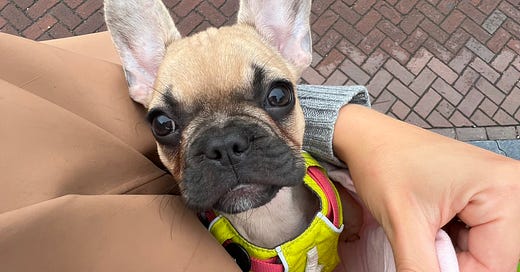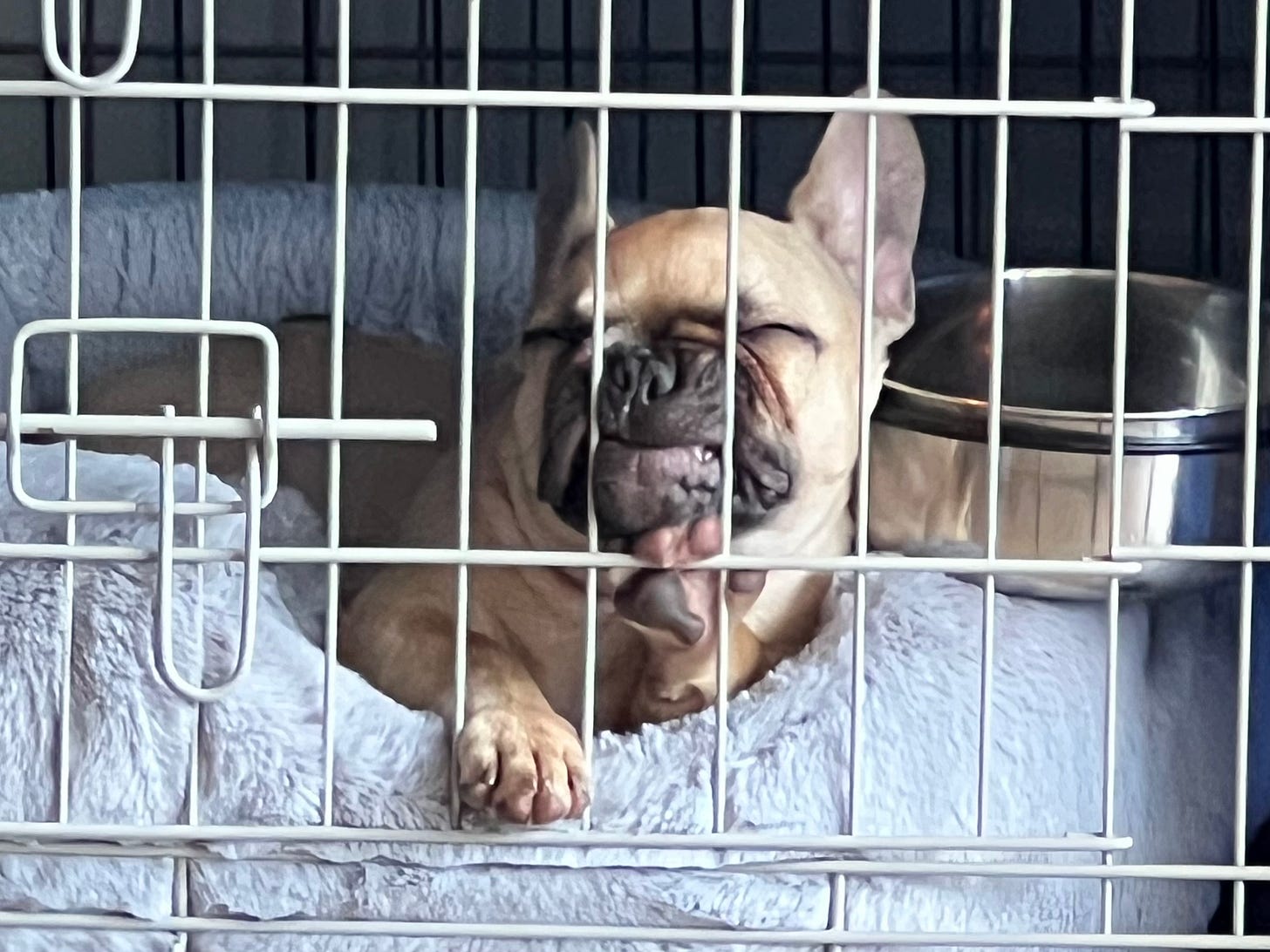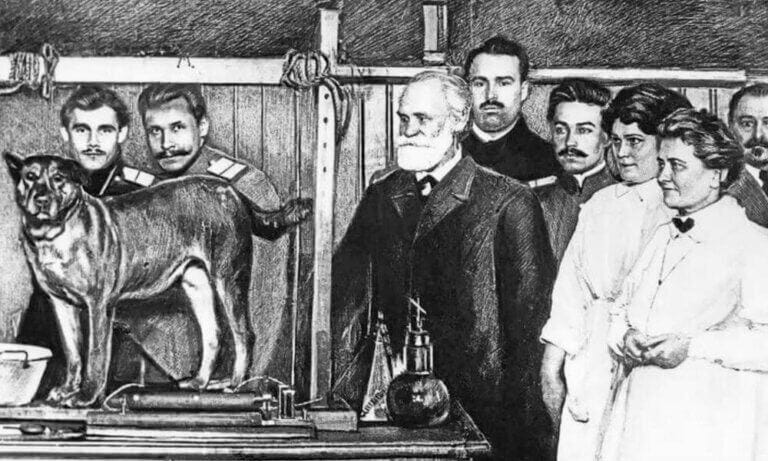puppy training taught me about impulse control
we activate our brain's 'go' circuit all day long. but what about our 'no go' circuit?
My puppy hit the 5-month mark on Monday.
She’s officially a teenager now.
When you first get a puppy people tell you you’re dealing with a blank slate. This sounds like a good thing. In reality, it means they’re using your house as a toilet and can’t survive 3 minutes without you.
During my first two weeks with my puppy, Maggie (née Marguerite), I felt like crying most days. I didn’t understand how I was to co-habit with this tiny unhinged animal.
She’s a French Bulldog. We’re not talking about a lion here.
Or are we?
I digress.
Impulse control: puppy edition
I knew that dogs don’t understand punishment. Meaning I had to fight every instinct not to punish her for ‘bad’ behaviour. Instead, I decided to look on the bright side of things…
👐 Dogs learn and react to rewards 👐
As proven by Ivan Pavlov, who conditioned dogs to expect the rewards associated with a trigger and/or verbal queue.
“Sit” + treat 🦴 = dog expects a reward when hearing “sit”
What’s more, is that by withholding rewards we can teach puppies impulse control.
Ignore them when they engage in bad behaviour and reward them once they choose the right behaviour.
🚨 Training impulse control feels like difficulty level 5 in puppy training.
It involves so much self-control and patience on behalf of the dog owner. Ignoring and disengaging from your puppy isn’t why you got a puppy in the first place.
Today, I don’t let Maggie run out of her crate, beg to get on the couch or sit next to us when we eat. I also make her sit/stay before running out the door. Impulse control has made her a more relaxed dog.
And that’s on neural plasticity ✨
Impulse control: human edition
I share this story because, just like Maggie, I also find it hard to control my impulses. My strongest impulses are directed at:
checking my phone
impulse shopping
skipping the gym, staying in bed
eating doughnuts
Some days the bad behaviour is more recurrent, setting the tone for the rest of the day. On other days, I am more disciplined. I go to the gym, skip the late-night binge-watching, and resist the urge to shop.
Sadly, I don’t have a strict owner or parent teaching me impulse control.
Making one allowance means I’m likely to make many more the rest of the day.
In this episode of The Knowledge Project (1:12:00), Andrew Huberman gives a good reason for why this happens. In the brain, our inclination to action is influenced by the basal ganglia.
In the basal ganglia, the ‘go’ circuit is responsible for motivating us to take action. While the ‘no-go’ circuit is responsible for inhibiting unwanted or impulsive behaviours.
Interestingly, these circuits influence behaviour at an emotional and motor level.
Notice when you stare at your phone once a notification pops up. Your ‘go’ circuit activates and you get a physical urge to move toward the phone. Sometimes, it feels like I would need to be physically restrained to resist the urge to pick up the phone.
To counter-balance our natural penchant for action, Huberman suggests we train our ‘no-go’ neural circuitry at least 20 to 30 times a day. For example, by actively resisting the urge to pick up our phone or have another cookie.
Practice shopping no-go’s
Resisting frequent micro-impulses to shop or browse has made me feel extremely powerful and in control. The more I train this ‘no-go’ pathway, the easier it becomes to resist these buying impulses.
Here are some buying no-go’s to practice:
On webshops, choose not to add to cart
Don’t click on the ad link
Walk past a store and mindfully decide to keep walking
Resist buying the pack of gum at the checkout
Think 24 hours before buying
If practising these buying no-go’s is too hard, start smaller. Sit still for five minutes a day or resist the urge to pick up your phone.
TLDR;
➡️ The less we control impulses, the harder it is to resist the desire for action
➡️ High-reward behaviour is hard to disengage from
➡️ Practising ‘no-go’ changes our neural circuitry






